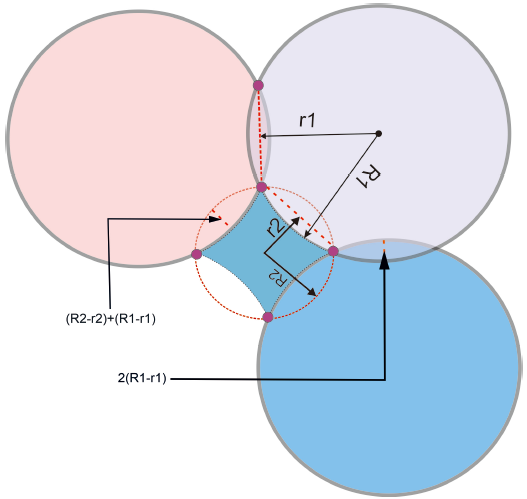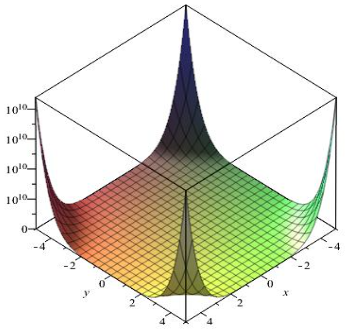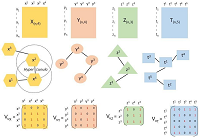Perturbation theory of the adiabatic pressure-less rarefied-fluid axisymmetricaccretion objects
Abstract
Pressure-less rarefied-fluid axisymmetric accretion objects are studied. The inviscid case and the rarefied viscous case with constant azimuthal component of the four-velocity in the pressure-less regime are addressed. The new General-Relativistic radial velocity slip flows expressions are analytically written in both the instances.
References
[1]Kandrup HE. Local stability in general relativity. Astrophysical Journal Part 1. 1982; 255: 691–704.
[2]Seguin FH. The stability of nonuniform rotation in relativistic stars. Astrophysical Journal Part 1. 1975; 197: 745–765.
[3]Tassoul J-L. Theory of rotating stars. In: Princeton Series in Astrophysics PUP. Princeton University Press; 1978.
[4]Vasyliunas VM. Theories of Magnetospheres around Accreting Compact Objects. Space Science Reviews. 1979; 24(4): 609–634.
[5]Friedman JL, Schutz BF. Lagrangian Perturbation Theory of Nonrelativistic Fluids. The Astrophysical Journal. 1978; 221: 937–957.
[6]Lecian OM. Transient Phenomena of Inviscid Accretion Gas-radiation Slim Disc in A Gravitational Potential after Adiabatic Perturbations of the Velocities. International Journal of Mathematics and Computer Research. 2024; 12: 4562.
[7]He J-H. Homotopy perturbation technique. Computer Methods in Applied Mechanics and Engineering. 1999; 178(3–4): 257–262.
[8]Zheng L, Zhang X. Variational Iteration Method and Homotopy Perturbation Method, in Modeling and Analysis of Modern Fluid Problems. Academic Press Elsevier; 2017.
[9]Chakraverty S, Mahato NR, Karunakar P, Rao TD. Homotopy Perturbation Method, in Advanced Numerical and Semi‐Analytical Methods for Differential Equations Chapter 12. John Wiley & Sons, Inc.; 2019.
[10]Shen Z, Yan W, Lu G. Behavior of viscous solutions in Lagrangian formulation. Journal of Computational Physics. 2010; 229, 4522–4543.
[11]Mattsson AE, Rider WJ. Artificial Viscosity: Back to Basics. Available online: https://www.osti.gov/servlets/purl/1115027 (accessed on 26 January 2025).
[12]Wilkins ML. Use of artificial viscosity in multidimensional fluid dynamic calculations. Journal of Computational Physics. 1980; 36(3): 281–303.
[13]Margolin LG, Lloyd-Ronning NM. Artificial Viscosity-Then and Now—Modeling Nature’s Shocks. Available online: https://ar5iv.labs.arxiv.org/html/2202.11084 (accessed on 26 January 2025).
[14]Abramowicz MA. Theory of Level Surfaces Inside Relativistic: Rotating Stars. II. Acta Astronomica. 1974; 24: 45.
[15]Lebovitz NR. The Effect of an Arbitrary Law of Slow Rotation on the Oscillations and the Stability of Gaseous Masses. Ap. J. 1970; 160: 701.
[16]Giri K. Numerical Simulation of Viscous Shocked Accretion Flows Around Black Holes. Springer; 2015.
[17]Kim J, Garain SK, Blasara DS, et al. General Relativistic Numerical Simulation of sub-Keplerian Transonic Accretion Flows onto Black Holes: Schwarzschild Spacetime. Monthly Notices of the Royal Astronomical Society. 2017; 472(1).
[18]El Mellah I. Wind accretion onto compact objects [PhD Thesis]. University of Paris 7 Diderot-Sorbonne Paris Cité; 2016.
[19]Spruit HC. Shock Waves in Accretion Disks. Reviews in Modern Astronomy. 1991; 4: 197–207.
[20]Kato S, Fukue J. Trapped Radial Oscillations of Gaseous Disks around a Black Hole. Publications of the Astronomical Society of Japan. 1980; 32: 377.
Copyright (c) 2025 Author(s)

This work is licensed under a Creative Commons Attribution 4.0 International License.











